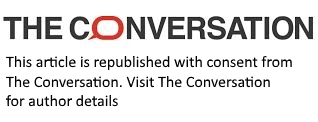Adolescence has sparked fears over teen slang – but emoji don’t cause radicalisation
- Written by Jessica Kruk, Lecturer in Indonesian Studies and Linguistics, The University of Western Australia

Jack Thorne and Stephen Graham’s crime drama Adolescence has earned widespread praise for its portrayal of incel culture and male violence.
But the show’s portrayal of 13-year-old Jamie (Owen Cooper) being radicalised by misogynistic online content has a lot of parents concerned about their own kids and how they talk online.
For many, this concern is amplified by the fear that, just like the adults in Adolescence, parents are often ignorant of the online language kids use to spread dangerous beliefs.
Journalists have produced a flurry of articles that promise to decode the “hidden meaning” of teen language by focusing on emoji featured on the show. One headline references supposedly “sinister emojis used by incel teenagers”.
Such concerns reflect a long history of moral panic around youth language. But defining or banning emoji won’t solve the deeper issues at play.
Emoji in Adolescence
Adolescence follows Jamie and his family after the teenager is accused of murdering his classmate, Katie.
The second episode shows Adam (Amari Bacchus), the teenage son of detective inspector Luke Bascombe (Ashley Walters), correcting his father’s misunderstanding of a series of emoji Katie posted on Jaime’s Instagram profile.
While Bascome assumes the 💯 and 💥 emoji are flirtatious, Adam explains that, in this context, they are connected to the online “manosphere”.
Bascome is initially resistant to this explanation, but Adam convinces him by citing examples of different meanings associated with different coloured heart emoji; red is specifically used for “love”, while orange means “you’re going to be fine”. He stresses “it all has a meaning”.
This scene highlights key generational divides in the perception and use of emoji. For Adam and Jamie’s parents’ generation, emoji are largely treated as decorative. For teenagers, they can carry important meanings.
Are the kids actually alright?
It’s important to remember this isn’t the first time we’ve seen concerns about generational communication differences reflecting larger social rifts. There are numerous examples in the media linking slang with issues of education, moral decline and even crime.
These attitudes have sparked debate over whether Australian schools should ban gen alpha and gen Z slang from classrooms.
While the frustration of parents and teachers is understandable, linguistic research shows aggressively negative attitudes towards teen language demotivate young people, exacerbate inequality and unnecessarily stoke intergenerational tension.
Emoji are highly context dependent. Much like gestures that are used with speech, we need to understand emoji in the specific conversations and communities they are used in. There is no consistent relationship between emoji use and inner emotional state that can be generalised across groups of teens or other emoji users.
Instead of fearing or banning emoji, we can try and understand how and why they are used in various contexts. And there are plenty of online resources to help with this. EmojiPedia, for example, describes the pill emoji 💊 as potentially referencing medicine, drugs, or an awakening to a controversial perspective (the “red pill” beliefs referenced in Adolecensce).
Emoji are intentionally flexible and intended to be used creatively. In fact, Unicode, the organisation that assesses proposals for new emoji, requires that items encoded as emoji are able to hold multiple meanings.
Research has also shown different people react to emoji differently. One survey from 2018 found older men were most likely to view emoji as confusing and annoying, while young women were most likely to view emoji positively in communication.
Times change, and stay the same
Intergenerational differences, and the tensions they evoke, are nothing new.
Back in the 2000s, parents and teachers voiced concerns that “netspeak”, with its creative punctuation and capitalisation, would diminish young people’s grasp of “proper” English. This did not come to pass.
Does this mean parents have nothing to worry about when it comes to their kids communicating online? Of course not.
Online misogynistic movements and red pill communities can bring great harm to vulnerable young people. Their growing popularity is something we all have to reckon with – but online language is not to blame.
Parents can’t realistically prevent the radicalisation of young men by simply referencing an emoji dictionary, nor can teachers stamp out the spread of misogyny by banning emoji and slang in classrooms.
Instead, as one scene between Adam and his dad shows, we need to collectively shift our focus towards facilitating open conversations between generations.
By doing so, we can not only better understand our differences, but can reduce the feelings of social isolation that leave young people vulnerable to becoming radicalised.
Authors: Jessica Kruk, Lecturer in Indonesian Studies and Linguistics, The University of Western Australia





